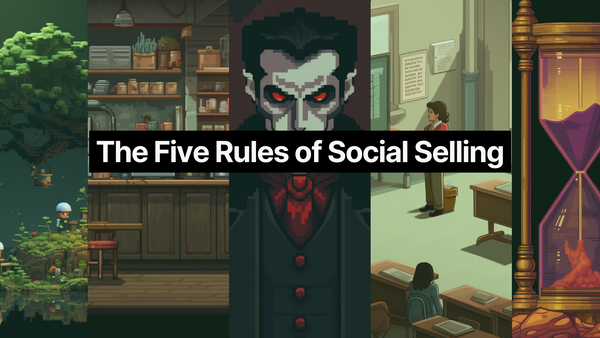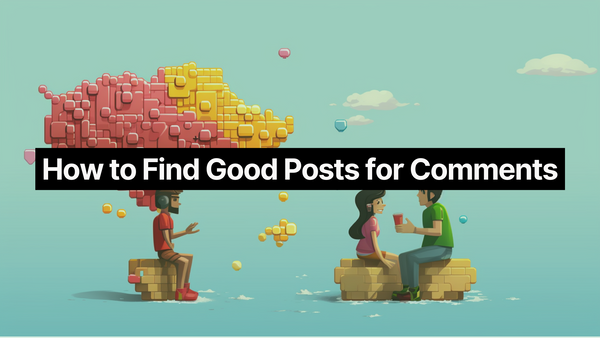After hundreds of experiments, training sellers, coaching sales managers, and building a consulting business, we only come back to five rules to make social selling work for you.
These rules are based on our experience of trying to conduct direct outreach to prospects on LinkedIn. These rules helped us close a $154K deal using just one post, one comment, and a few DMs. These rules have helped many other sellers build gigantic pipelines and close deals off of LinkedIn in a fairly short amount of time.
Rule 1. The Signs of Life Rule
Only target people who are active on the platform.

If you try and call (720) 555-3388, you won't reach anyone. It's a disconnected number. But what happens if that's your prospect's phone number? What would you do?
Chances are, you'd never call them again and you'd try to reach them via email or through a mutual friend. The channel itself is no longer viable and you'll need to find a different way to reach them.
This same principle applies to LinkedIn. If your prospects are not using LinkedIn, it's not going to be a useful part of your outreach strategy.
Quick Tip: Use a Sales Navigator Filter
A good starting place to follow the Signs of Life rule is to use Sales Navigator's "Posted on linkedin in 30 days" filter, which will only pull up leads who are actively posting on the platform.
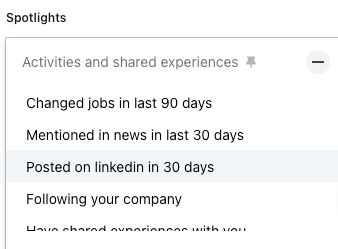
This is not a catch all solution – there are many prospects who don't post regularly but do log-in to like posts and comment. Sales Navigator doesn't allow you to filter leads by that activity (yet), so we'd recommend eventually scraping your lead list manually to see if they're active on the platform.
Rule 2. The Coffee House Rule
Keep your tone casual but credible.
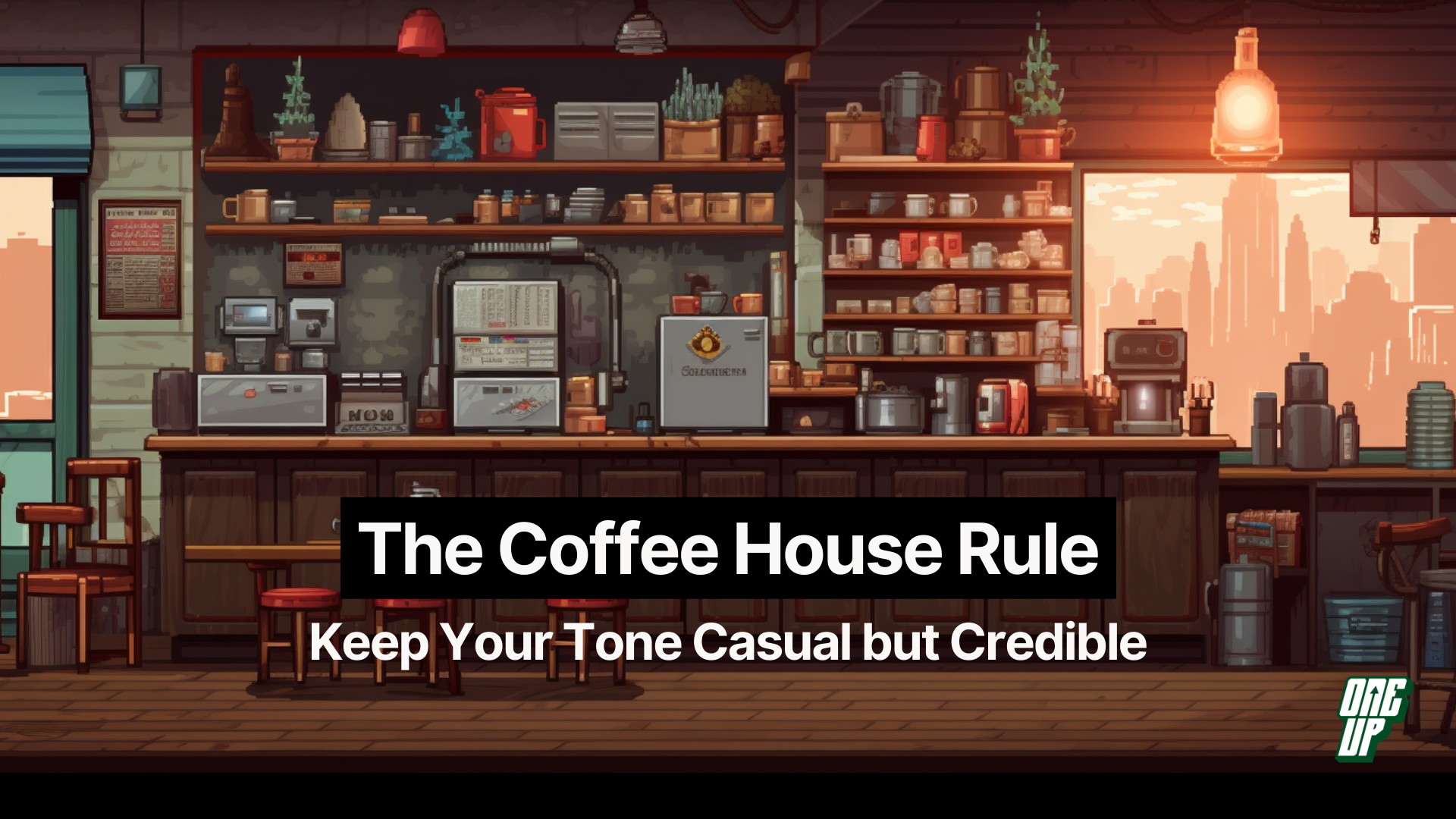
If you regularly visit a café or a coffee roaster, chances are the first conversation you'll have with the barista is very surface-level and casual. Same goes for that attractive person in the corner who keeps stealing glances at you 😉
We've noticed that too many sellers are super professional and buttoned up on the platform. Consider the following two version of the same message:
- Version A: Hello Nicholas, I noticed on your profile that you brew a lot of beer. I'm really interested to know, do you have a favorite kind or type you tend to brew a lot?
- Version B: Nicholas! Might've been digging into your profile and noticed you brew a lot of beer... do you have a favorite "go-to" that you make? Been getting into drinking more Belgian Tripels (not much of a homebrewer but I've considered it).
Version B is much more casual without going overboard. It also has context about why you're asking the question. The Coffee House Rule is all about having good conversations that don't feel too slimy, pitchy, or weird.
Pro tip: Don't ignore your industry. Use your head. If you're selling to lawyers in financial services, they may require a bit more professional tone. That's fine – but don't forget they're a real person too. You should let your personality slip in sometimes.
Rule 3. The Vampire Sales Rule
Don't pitch unless you're invited.

This rule is named after an old folklore legend: vampires were not allowed into your home unless they were invited in. The same goes for your pitch.
If there is a single rule that changed the game for us, it's this one. In a world of pitchslaps and over-eager salespeople and absolutely terrible InMails, be a vampire.
The goal of your entire LinkedIn strategy shifts from trying to book meetings to trying to get that person to ask "what do you do?"
Consider how you're currently prospecting. Are you an interesting conversation partner? Or do you try and immediately book them for a time to meet? Do you lean into shared passions, industry trends, or insightful questions... or do you try and rush the pitch to see if they will get time with you now?
The reason this rule accelerates success on LinkedIn is because the platform is filled with people who are trying to pitch your prospects. They're already overwhelmed by the number of people who are begging for their attention.
Vampire sales is all about being interested in order to be interesting. You want to build credibility in their eyes on LinkedIn before they book a meeting with you. It's social media platform after all, not a sales platform. Be social.
Quick Note: We do break this rule only under strict circumstances. Those guidelines include: (1) have an incredibly specific reason that you're reaching out that person instead of another person at the same account, (2) know why you're reaching out to them today vs. 60 days from now, (3) have a key insight about a specific business challenge you believe they're experiencing based on data you see about their company or know from other stakeholders at the same account, and (4) know why they need to hire your company over your competitors for this specific challenge you've identified.
Rule 4. The Flip Rule
Prospects book meetings with the expert practitioner, not the vendor

There's a curious thing that happens when you follow the Vampire Sales Rule: prospects start to lean into conversations with you. If you're actually sharing interesting articles, talking about shared passions, or asking insightful questions, you're going to build a good rapport.
Then... there's the Flip. The Flip is when they start to perceive you as someone with an interesting insight about their challenges. You become the professor leading the class – not just a vendor with a product to sell.
The Flip Rule informs an engagement strategy and a content strategy that is all about them (the prospect) and very little about you (the seller).
Staying on top of industry trends, having an opinion on a variety of relevant topics, knowing your stuff. These are the fundamentals of following The Flip Rule.
Gut-Check Question: Why should they buy from your competitor? One interesting way to start following The Flip Rule is to articulate the reasons why certain prospects or companies should buy from your competitor over your company. If you can't answer this question, you don't have a deep enough insight into the challenges a good prospect faces – and you won't be able to offer anything insightful to the prospect as a part of your conversations.
Rule 5. The 15 Minute Rule
If you haven't booked a meeting in 15 minutes of conversation, move on to another prospect
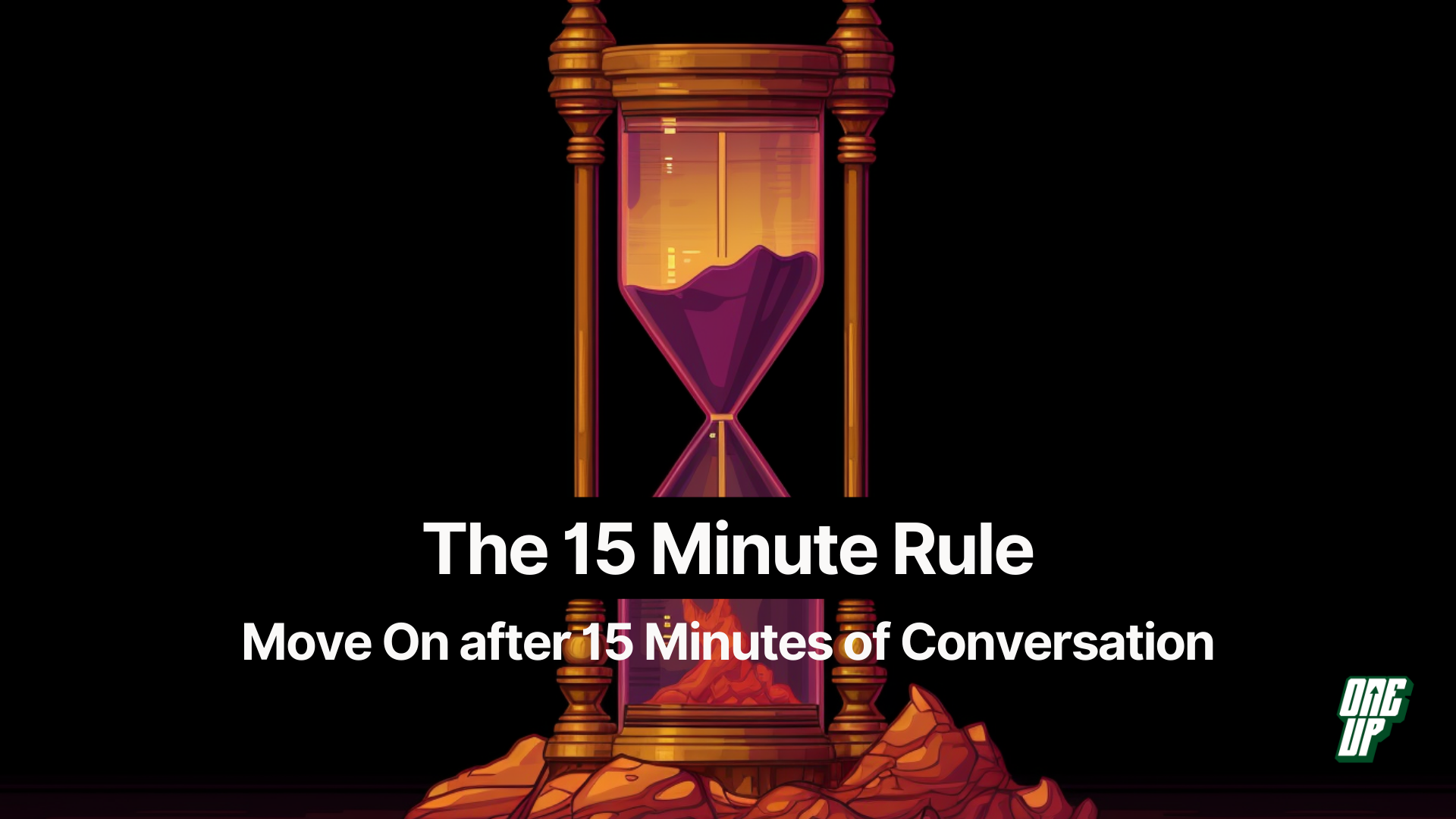
The most common objection we hear from salespeople is "this seems like it takes a lot of time." In our experience, not really. At least when you follow The 15 Minute Rule.
In our experiments, 98% of meetings are booked within 15 minutes of conversation. If you're talking with a prospect, following Vampire Sales and going for The Flip, and it's been 15 minutes but no inkling that they'd be interested in meeting with you? Move on.
You can keep the conversation going throughout days and weeks, of course. But it's probably not the right time to have a meeting anyway. Cycle back to them at a later time with a different conversation starter.
When you're running a prospecting power hour, you don't want to get lost in the sauce of one conversation. Make sure you're managing all of your lists effectively. Following the 15 Minute Rule keeps you efficient in your time.
Bonus: It's okay to wait 24 hours to respond. In the world of fast-paced sales, it can feel like every ping you get from a prospect is something you need to respond to immediately. In fact, it's okay to have a conversation that stretches out. Use your head – if you need to respond to it because it's an urgent request, go for it. But don't feel obligated to respond to every DM in the moment.



